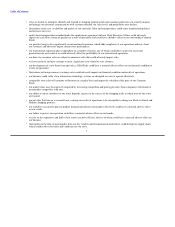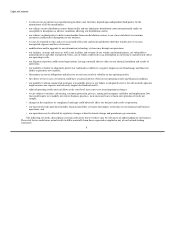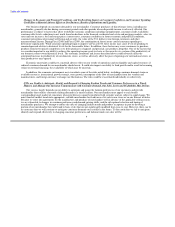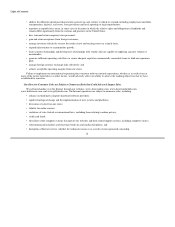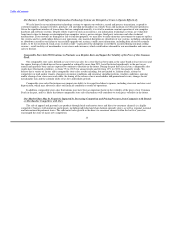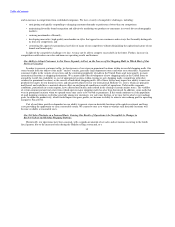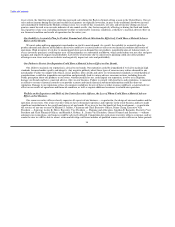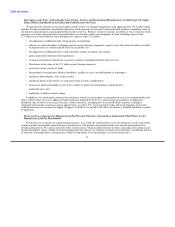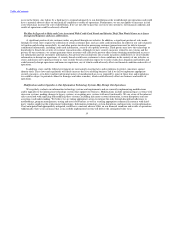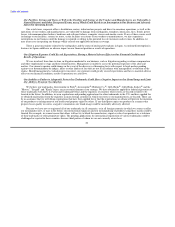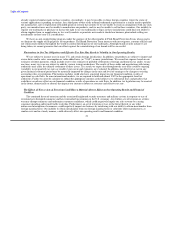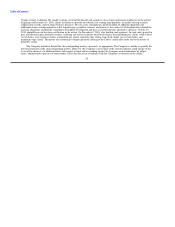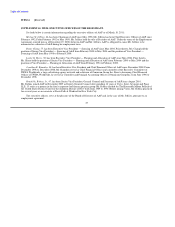Abercrombie & Fitch 2010 Annual Report Download - page 20
Download and view the complete annual report
Please find page 20 of the 2010 Abercrombie & Fitch annual report below. You can navigate through the pages in the report by either clicking on the pages listed below, or by using the keyword search tool below to find specific information within the annual report.
Table of Contents
Interruption in the Flow of Merchandise from Our Key Vendors and International Manufacturers Could Disrupt Our Supply
Chain, Which Could Result in Lost Sales and Could Increase Our Costs.
We purchase the majority of our merchandise outside of the U.S. through arrangements with approximately 190 vendors which
includes foreign manufacturers located throughout the world, primarily in Asia and Central and South America. In addition, many of
our domestic manufacturers maintain production facilities overseas. Political, social or economic instability in Asia, Central or South
America, or in other regions in which our manufacturers are located, could cause disruptions in trade, including exports to the
U.S. Other events that could also cause disruptions to exports to the U.S. include:
• the imposition of additional trade law provisions or regulations;
• reliance on a limited number of shipping and air carriers who may experience capacity issues that adversely affect our ability
to ship inventory in a timely manner or for an acceptable cost;
• the imposition of additional duties, tariffs and other charges on imports and exports;
• quotas imposed by bilateral textile agreements;
• economic uncertainties and adverse economic conditions (including inflation and recession);
• fluctuations in the value of the U.S. dollar against foreign currencies;
• restrictions on the transfer of funds;
• the potential of manufacturer financial instability, inability to access needed liquidity or bankruptcy;
• significant labor disputes, such as dock strikes;
• significant delays in the delivery of cargo due to port security considerations;
• financial or political instability in any of the counties in which our merchandise is manufactured;
• natural disasters; and
• regulations to address climate change.
In addition, we cannot predict whether the countries in which our merchandise is manufactured, or may be manufactured in the
future, will be subject to new or additional trade restrictions imposed by the U.S. or other foreign governments, including the
likelihood, type or effect of any such restrictions. Trade restrictions, including new or increased tariffs or quotas, embargoes,
safeguards and customs restrictions against apparel items, as well as U.S. or foreign labor strikes and work stoppages or boycotts,
could increase the cost or reduce the supply of apparel available to us and adversely affect our business, financial condition or results
of operations.
We do not Own or Operate any Manufacturing Facilities and, Therefore, Depend Upon Independent Third Parties for the
Manufacture of all Our Merchandise.
We do not own or operate any manufacturing facilities. As a result, the continued success of our operations is tied to our timely
receipt of quality merchandise from third-party manufacturers. Our products are manufactured to our specifications primarily by
foreign manufacturers. We cannot control all of the various factors, which include inclement weather, natural disasters, political and
financial instability, strikes, health concerns regarding infectious diseases in countries in which our merchandise is produced, and acts
of terrorism, that might affect a manufacturer's ability to ship orders of our merchandise in a timely manner or to
17


